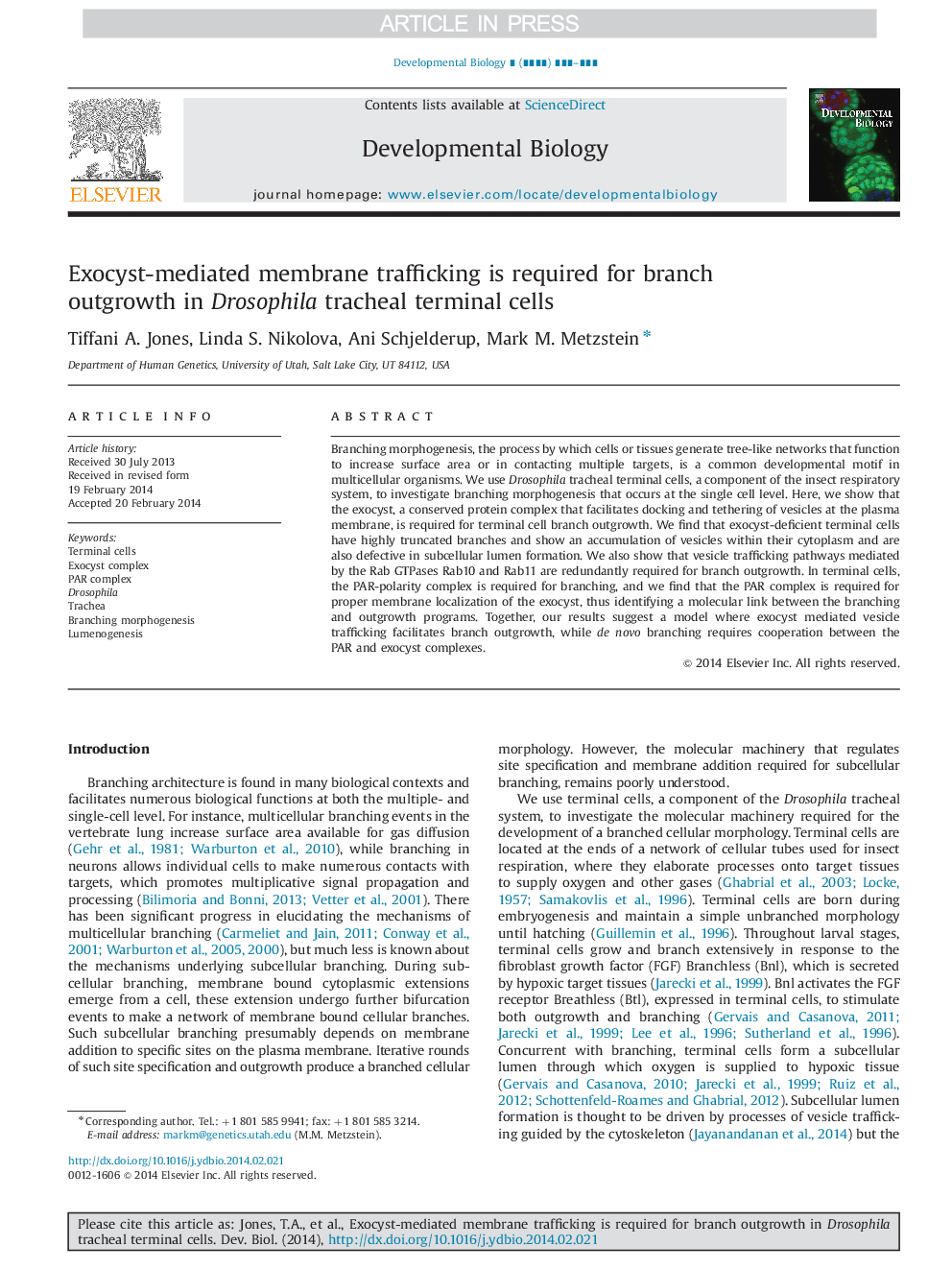| Article ID | Journal | Published Year | Pages | File Type |
|---|---|---|---|---|
| 10931740 | Developmental Biology | 2014 | 10 Pages |
Abstract
Branching morphogenesis, the process by which cells or tissues generate tree-like networks that function to increase surface area or in contacting multiple targets, is a common developmental motif in multicellular organisms. We use Drosophila tracheal terminal cells, a component of the insect respiratory system, to investigate branching morphogenesis that occurs at the single cell level. Here, we show that the exocyst, a conserved protein complex that facilitates docking and tethering of vesicles at the plasma membrane, is required for terminal cell branch outgrowth. We find that exocyst-deficient terminal cells have highly truncated branches and show an accumulation of vesicles within their cytoplasm and are also defective in subcellular lumen formation. We also show that vesicle trafficking pathways mediated by the Rab GTPases Rab10 and Rab11 are redundantly required for branch outgrowth. In terminal cells, the PAR-polarity complex is required for branching, and we find that the PAR complex is required for proper membrane localization of the exocyst, thus identifying a molecular link between the branching and outgrowth programs. Together, our results suggest a model where exocyst mediated vesicle trafficking facilitates branch outgrowth, while de novo branching requires cooperation between the PAR and exocyst complexes.
Related Topics
Life Sciences
Biochemistry, Genetics and Molecular Biology
Cell Biology
Authors
Tiffani A. Jones, Linda S. Nikolova, Ani Schjelderup, Mark M. Metzstein,
